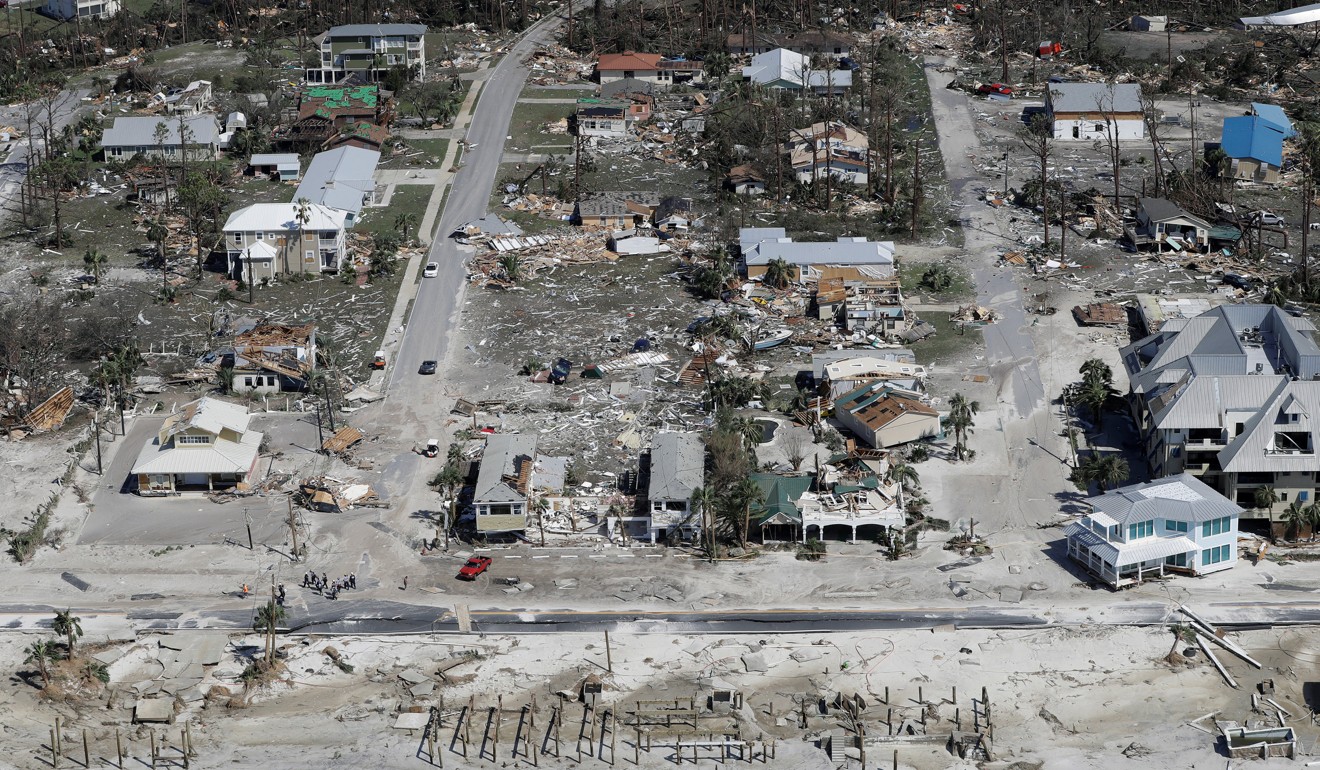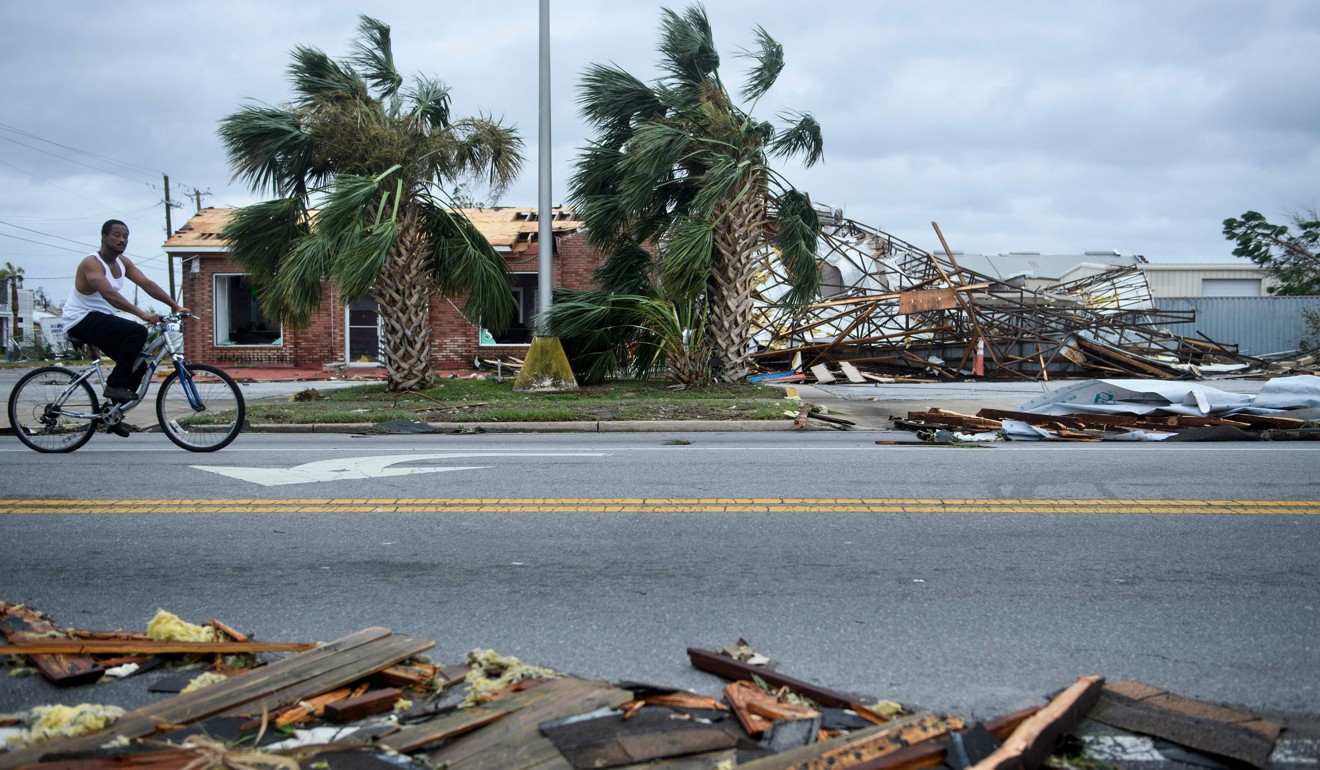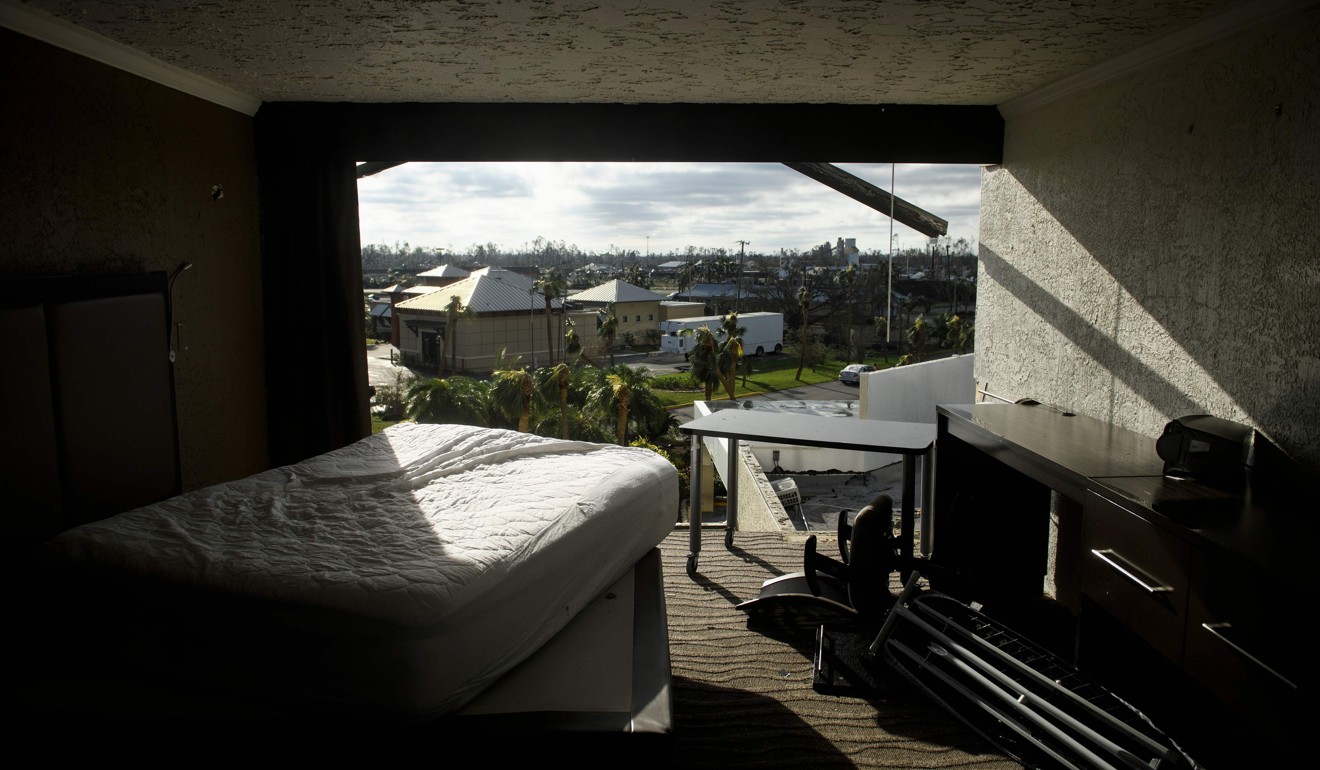
Death toll rises as flattened Florida Panhandle picks up the pieces as powerful storm Michael moves northeast
The hurricane weakened to a tropical storm as it tore through the state on its way to Georgia, the Carolinas and Virginia
Search-and-rescue workers scoured a stark scene of devastation on Thursday looking for hundreds of people who defied evacuation orders in Mexico Beach, Florida, ground zero of Hurricane Michael’s onslaught.
Nearly entire blocks of small two-story beach homes were razed to their tile floors, likely by the storm surge. Furniture, dishes and hot water tanks were strewn about roads and yards. Stands of pine trees were flattened.
Army personnel used heavy equipment to push a path through debris to allow rescuers through, as Blackhawk helicopters circled overhead looking for survivors.
Michael, the third most powerful hurricane ever to hit the US mainland, weakened overnight to a tropical storm but marched northeast on Thursday, toppling trees and bringing “life threatening” flash flooding to Georgia and Virginia, the National Hurricane Center (NHC) reported.
At least seven people were killed by the storm in Florida, Georgia and North Carolina from falling trees and other hurricane-related incidents, according to state officials.
Michael crashed ashore on Wednesday afternoon, carrying winds of up to 250km/h (155mph) and causing deep seawater flooding.

For rescuers from the Federal Emergency Management Agency (FEMA), searching for survivors brought special challenges. On Thursday, supported by dogs, drones and GPS devices, they found homes in places where they were not a day before, making it difficult to do a methodical house-to-house survey.
“We prepare for the worst and hope for the best. This is obviously the worst,” said Stephanie Palmer, 48, a firefighter and FEMA rescuer from Coral Springs, Florida. “All the training we do doesn’t remove the human part of us. My heart goes out to these people.”
Authorities said about 280 residents of Mexico Beach ignored evacuation orders as the storm approached. The area is known for its small beach towns, wildlife reserves and the state capital, Tallahassee.
Michael was a Category 4 storm, just shy of a rare Category 5, when it came ashore. It weakened steadily as it travelled inland.
By 8am on Thursday it had been downgraded to a tropical storm with 85km/h (50mph) winds as it pushed through Georgia into the Carolinas, the National Hurricane Centre (NHC) said.

Video shot by CNN from a helicopter showed homes closest to the water in Mexico Beach had lost all but their foundations. A few blocks inland, about half the homes were reduced to piles of wood and siding and those still standing had suffered heavy damage.
Two of the people killed in the storm were a Florida man whose house was struck by a tree and a Georgia girl who was struck by debris falling into her home, officials and local media said.
More than 830,000 homes and businesses were without power in Florida, Alabama and Georgia on Thursday.

The hurricane, the fiercest to hit Florida in 80 years, pummelled communities across the Panhandle and turned streets into roof-high waterways.
“The wind that came through here was surreal. It destroyed everything,” Jason Gunderson, a member of a group of rescuers that calls itself the Cajun Navy, told CNN early on Thursday from Callaway, a suburb of Panama City. “It’s unlivable. It’s heartbreaking.”

Thousands of people hunkered down in shelters overnight after fleeing their homes before the storm.
An estimated 6,000 people fled to emergency shelters, mostly in Florida, and that number was expected to swell to 20,000 across five states by the weekend, said Brad Kieserman of the American Red Cross.
About 32km (20 miles) south of Mexico Beach, floodwaters were more than two metres (seven feet) deep near Apalachicola, a town of about 2,300 residents, hurricane centre chief Ken Graham said. Wind damage was also evident.

“There are so many downed power lines and trees that it’s almost impossible to get through the city,” Apalachicola Mayor Van Johnson said.
Michael ranked as the third strongest storm on record to make landfall in the continental United States. Only Hurricane Camille on the Mississippi Gulf coast in 1969 and the so-called Labour Day hurricane of 1935 in the Florida Keys were more intense.
Even before landfall, the hurricane disrupted energy operations in the gulf, cutting crude oil production by more than 40 per cent and natural gas output by nearly one-third as offshore platforms were evacuated before the storm hit.

